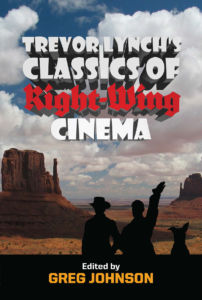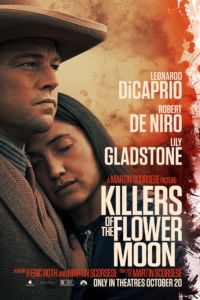Killers of the Flower Moon
Martin Scorsese, who turns 81 today, is a master of the gangster movie: Goodfellas, Casino, Gangs of New York, The Departed, The Irishman, and now Killers of the Flower Moon. Killers is the true story of a series of murders that took place in the 1920s on the Osage Indian Reservation in Oklahoma.
When oil was discovered under their reservation, the Osage nation became, in effect, the first oil sheikdom. Osage cashed in their oil revenues for fancy houses, cars, clothes, and bling. Alcoholism, obesity, and diabetes ran rampant. To prevent the Osage from ruining themselves, the government appointed guardians to dole out their money. Such paternalism is necessary with people who have lower than average IQs and are in a hurry to enjoy themselves without thinking about the long run.
But oil money attracted more than just merchants. It also attracted criminals and gold-diggers. I have never been comfortable with whites who marry outside our race. But I despise the sort of white who would do that for money. Still, there’s something even lower. I don’t have the moral categories to describe a white man who would marry a non-white for her money, father children with her, then bump off his in-laws one by one to increase his wife’s estate. Then he starts working on the wife and children.
The leader of the gang is a liberal sociopath in the Clinton, Biden, Beto O’Rourke, Gavin Newsom mold. He poses as a great friend and champion of the Osage. He speaks their language and bestows gifts upon them. He is an opponent of race prejudice and the Ku Klux Klan. But all the while, he cold-bloodedly kills and robs the people he befriends. But you could never accuse him of “racism.”
Altogether, the gang probably killed 20-odd people, including some of their own accomplices. It is hard to be sure, since some of the Indians may have died of genuine illnesses, accidents, and suicides. Beyond that, murders they had no hand in may have been pinned on them just to wrap up open cases. There’s a lot of room for doubt, because American Indians are prone to violence, alcoholism, diabetes, and suicide, and few Osage made it into their 50s, anyway.
The killers’ most fascinating trait is their combination of retail shrewdness and wholesale madness. Some of the murders were cleverly plotted, but when murders, suicides, and mysterious fatal illnesses started adding up — as did the number of accomplices — it should have been obvious that this could not go on forever. But this gang would have murdered the whole state of Oklahoma if nobody had stopped them. It never seemed to occur to them to quit while they were ahead.

You can buy Trevor Lynch’s Classics of Right-Wing Cinema here.
Is Killers an anti-white movie? Not really. It isn’t preachy about race. It doesn’t blackwash all whites or whitewash the Osage. If anything, it can be read as a cautionary tale against race-mixing, materialism, and liberal democracy.
The Indian elders are portrayed with great dignity. But they have been thoroughly corrupted by their wealth. They used to be warriors, but none of the whites who prey upon them and their daughters find them threatening anymore. They run the tribe as a liberal democracy. They see that race-mixing is claiming their people’s future, but they cannot say no to their own daughters who are marrying out. They know that whites are killing them, but they won’t exclude whites from their own families and councils. The villains, moreover, are not “bad” whites who look down on them, but “good” whites who have married into their tribe. (Virtually none of these murders would have happened without race-mixing.) Instead of going on the warpath, the Osage send a white who has married an Indian woman to Washington, DC to petition the federal government for help. They remind me of the older generation of mainstream conservatives, complaining about genuine problems but prevented from solving them by their own principles and their self-indulgent lifestyles.
The Osage may be pathetic, but the whites who prey on such people are utterly despicable. Yet none of them are “racists.” Racists would not sully themselves with such crimes. Beyond that, the heroes who finally brought the killings to an end were white, from President Coolidge to J. Edgar Hoover to the agents they dispatched to Oklahoma. Thus as a white man, I left the theater feeling no “white guilt,” but a good deal of healthy shame for the scum that committed these crimes and some healthy pride that decency finally triumphed.
I also felt admiration for Martin Scorsese and everyone involved in this movie. There is a vast cast, but not a weak performance in the bunch. Leading men Leonardo di Caprio and Robert De Niro are particularly outstanding. The only flaw of this movie is its slightly more than three hour running time. Surely this story could have been told more economically. Although, in all fairness, I was so captivated that I never once checked the time.
If you like character studies and crime dramas that do not insult your intelligence or taste, I highly recommend Killers of the Flower Moon. It is not Scorsese’s best film, but I enjoyed it much more than his last outing, The Irishman, and it is head and shoulders above anything else in the theaters today.



